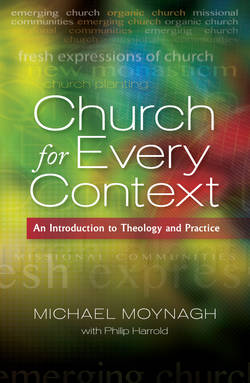Читать книгу Church for Every Context - Michael Moynagh - Страница 59
На сайте Литреса книга снята с продажи.
Questions for discussion
ОглавлениеWhich of the examples in this chapter most spoke to you, and why?
What themes connect the examples in this chapter?
What principles of good church practice can we learn from the past?
How has the history in this chapter stimulated your thinking about new possibilities?
1 Quotations from the Didache are from O’Loughlin (2010).
2 On the significance of the fellowship meal in the early Christian house church, see Patzia (2001, pp. 216–30).
3 For a detailed study of this pattern, see Milavec (2003).
4 This and other Bible quotations in this chapter are taken from the English Standard Version [ESV], Wheaton, IL: Crossway Bibles, 2001.
5 See also Bradley (2000).
6 An especially helpful perspective on Benedictine wisdom for today is Casey (2005).
7 Saint-Thierry, First Life of Saint Bernard, quoted in Casey (2005, pp. 137–8).
8 A helpful resource is Myers (2011). For more general background, see Little (1978).
9 This announcement, recorded on parchment, is quoted in Skipton (1907, p. 85).
10 J. Hacket, quoted in Carter and Carter (1892, p. 247).
11 The Puritan pamphlet entitled The Arminian Nunnery (1661) is quoted in Parry (2006, p. 120).
12 An early version of this structure appears in Wesley (1831, pp. 176–90).
13 See, for example, John Wesley’s ‘Reasons Against a Separation from the Church of England’, at Project Canterbury: www.anglicanhistory.org/wesley/reasons1760.html.
14 William Temple, quoted in Reynolds (1993, p. 329).
15 William Temple, quoted in Wolf (1979, p. 110).
16 Dorothy L. Sayers to John Rhode, 2 January 1939, in Reynolds (1997, p. 105).
